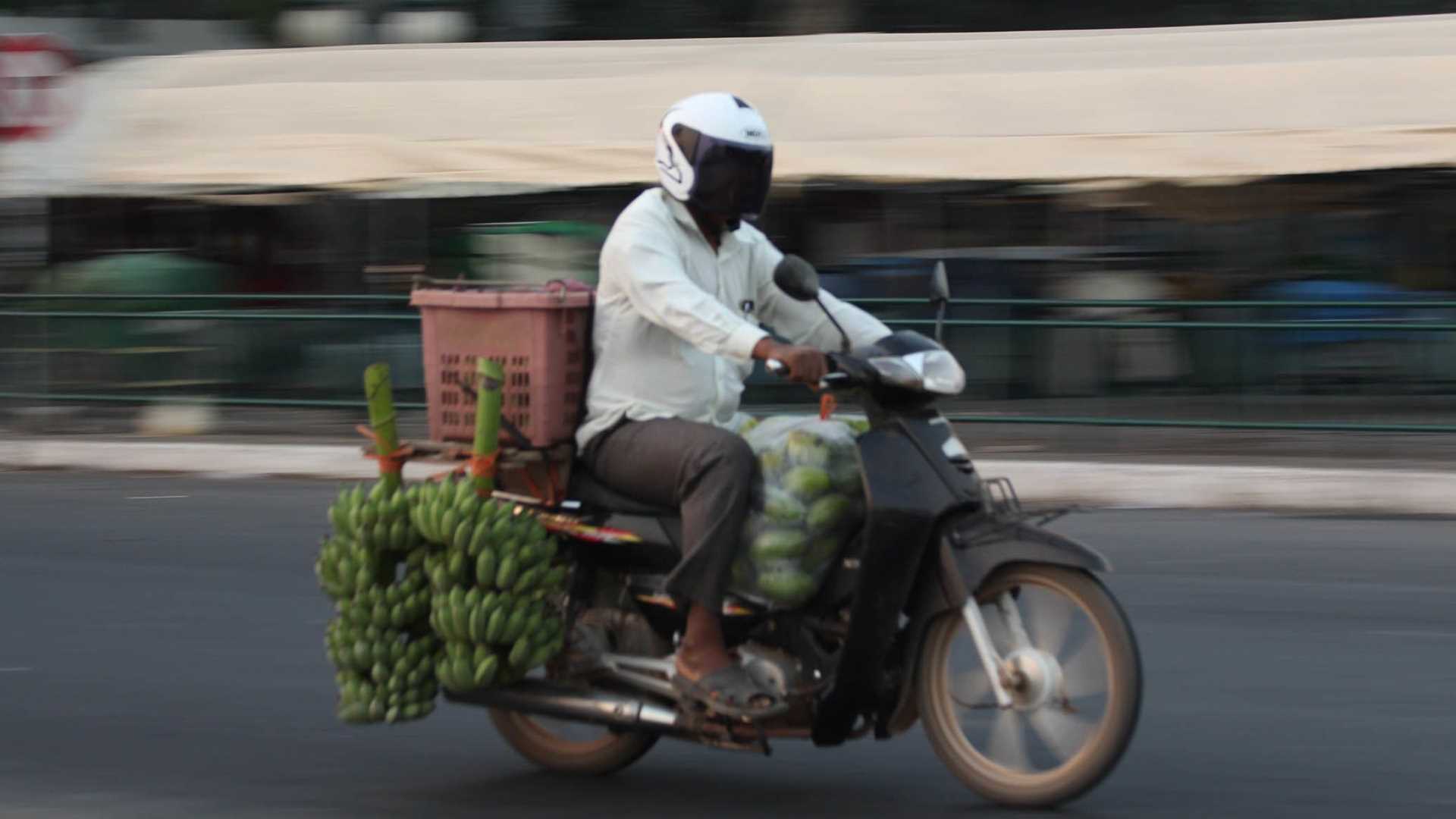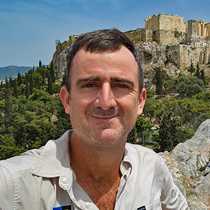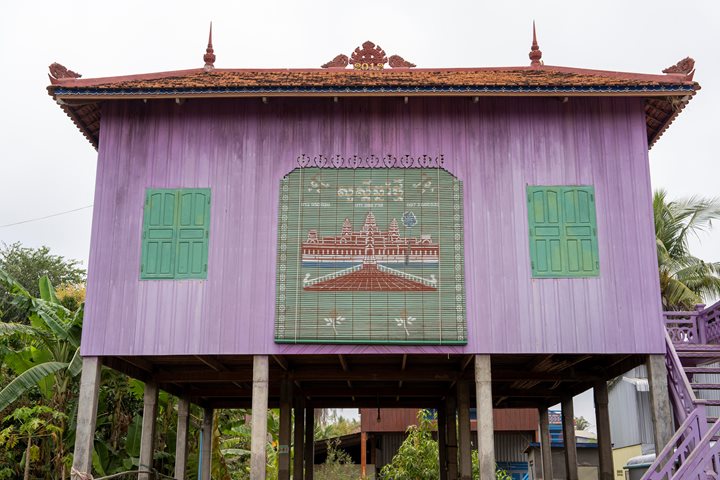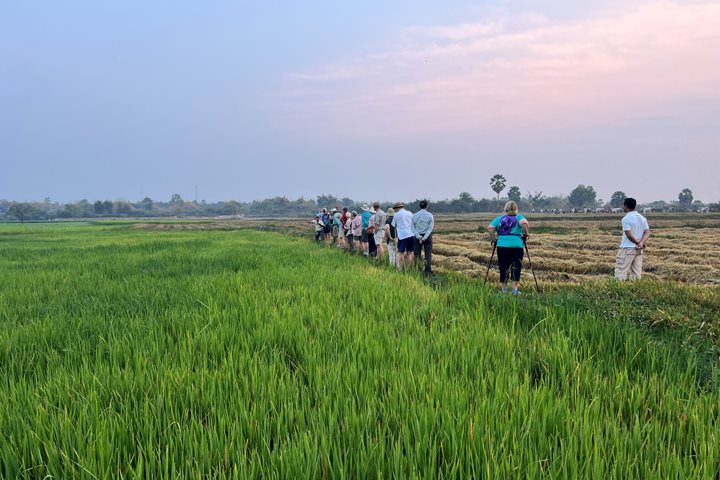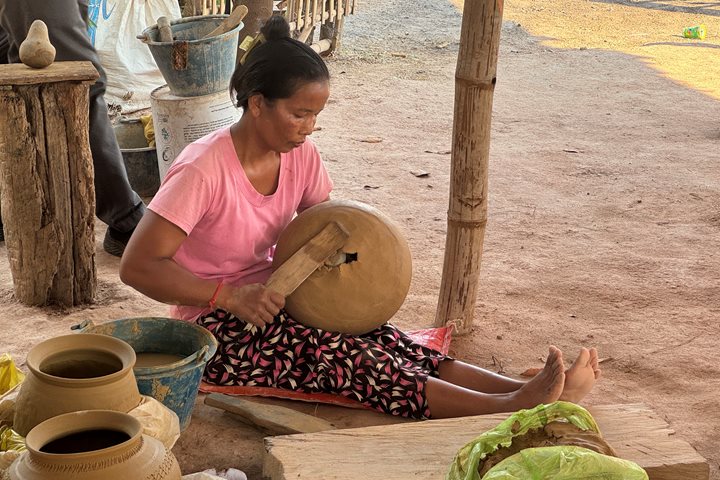The avid photographers rose before dawn to enjoy a walk through the streets of Phnom Penh, taking advantage of the “golden hour” with its warm, diffused sunlight. As the usually bustling city wakes up we see a very different side to it. After walking along the waterfront, we headed over to Wat Phnom to see a colony of fruit bats as they settle down for the day suspended in the trees. After we return to ship, Jahan casts off and starts to make its way up the Tonle Sap (the “freshwater river” in Khmer), a river which is fed by a great lake of the same name. In a very real sense he Tonle Sap is Cambodia’s life-support system, as it is a plentiful source of freshwater fish, and has been the primary source of protein for the Khmers for millennia. Furthermore, its connection to the far larger Mekong and location at the centre of a vast plain results in the Tonle Sap lake greatly increasing in volume every wet season, quadrupling its area as the water level rises significantly. This annual flood pulse deposits fertile alluvial soils along the liminal zone which improves the yield of the rice harvest. Our voyage along this part of the river takes us through a very rural part of the country, where life moves a seemingly leisurely pace. It also presents a great opportunity for a spot of birding.
This morning we welcomed our guest speaker Jean-Michel Fillipi, a linguist who has lived and worked in Cambodia for many years, and knew the former King Sihanouk personally. He takes us through the tumultuous history of modern Cambodia’s political and social upheavals, helping us to comprehend the origins of the horrors which took place. It’s not an easy subject.
In the afternoon we arrive at city of Kampong Chhnang (the “port of the cooking pots”), the capital of the province of the same name. Kampong Chhnang has long be renowned for its earthenware pottery tradition, being the primary source for Cambodia’s cooking pots. Being situated along one of the country’s main waterways it also features communities of Vietnamese and Cham, who are typically skilled fishermen. After coming ashore, we took a short drive out to Andong Russei, a farming village in which most women manufacture various pots and cooking ware, either by the age-old “paddle and anvil” technique, or by compression moulding. While there we also meet Mr Ry, a Khmer farmer who is a master climber of the sugar palms. With ease he scales the towering palm trees using a single stalk of bamboo as a ladder. Within a few minutes he has gathered all the palm juice and setup replacement cannisters to collect for another 12 hours. Mr Ry goes through this daring process 50 times per day, all year round! The palm juice is then boiled down to form sugar, or fermented into a whisky.

